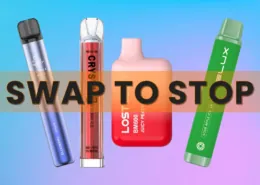Disposable Vape Batteries Show Reusability and How to Use
A new study reveals that the lithium-ion batteries used in disposable e-cigarettes and vaping devices exhibit remarkable resilience, maintaining performance through hundreds of charge cycles despite being marketed as single-use.
Disposable Vape Popularity Surges Alongside Waste and Chemical Leaching Fears
Researchers from University College London (UCL) and Oxford highlight the environmental threats posed by the ballooning popularity of disposable vapes in a paper published in Joule.
They note disposable vape usage in the UK spiked over 18X between January 2021 and April 2022. Among 18-year-olds, adoption exploded from 0.4% to 54.8% in just 15 months.
This breakneck growth exacerbates waste issues, with around 1.3 million devices discarded weekly. Associated battery chemicals like lithium, nickel and cobalt thus increasingly leach from landfills into waterways.
“Rapid disposable vape uptake has urgently amplified waste and chemical pollution concerns,” said study co-author Paul Shearing, a sustainable energy professor at Oxford and UCL. “But their resilient batteries suggest environmental impacts may run deeper still.”
Methodical Battery Testing Defies Expectations
Shearing’s team suspected disposable vape batteries were secretly rechargeable despite marketing claims. But no prior research had systematically assessed longevity.
Employing established battery testing protocols, researchers carefully extracted cells from vapes in a controlled setting. High-powered microscopes and X-ray tomography revealed their meticulously layered internal structure.
Through successive charge and discharge cycles, performance held up “sometimes for hundreds of reuses,” Shearing noted – directly contradicting single-use branding.
Public Awareness and Responsible Disposal Now Critical
With reusable capabilities verified, researchers underscore public education on proper battery disposal as paramount to mitigating ecological harm.
“Manufacturers must provide robust recycling pathways and shift toward rechargeable devices,” Shearing urged. “Consumers also have a duty to keep these batteries out of landfills and waterways.”
Please also check: Ecigator Sticky Open Pod with Resuesable Battery
His team actively investigates selective recycling techniques to recover individual battery components without contamination. Additionally, they examine sustainable next-gen chemistries like lithium-sulfur and sodium-ion.
“All players, especially developers, must consider full battery lifecycles during design,” Shearing advised.
Turn Discarded Vapes Into USB Power Banks
Tapping their latent reusability, hobbyists can creatively transform disposed vape batteries into handy USB power banks for phones and other devices.
DIYer [N-Ender_3] demonstrates an easy build packing salvaged cells into a 3D-printed case. The key is an inexpensive off-the-shelf power bank module to safely charge and discharge the parallel-wired cells, stepping voltage up to 5V USB output.
However, [N-Ender_3] cautions that cells must be fully pre-charged and voltage-balanced before connecting to avoid potential problems. The basic module lacks individual cell balancing.
“It’s cheap and green to convert discarded vape batteries into useful chargers,” he said. “And far safer for the environment than leaving volatile lithium-ion cells littering streets.”
With precautions, repurposing presents a creative way to extract additional value from vape electronic waste. But responsible dispoal and recycling remain imperative as disposable varieties proliferate.
- HHC Vapes: What Are They & Are They Safe? - July 31, 2025
- Cannabis and Vape Shop Workers Rank Happiest in Nation - July 31, 2025
- Richmond, VA, Restricts New Vape & Tobacco Shop Locations - July 31, 2025











